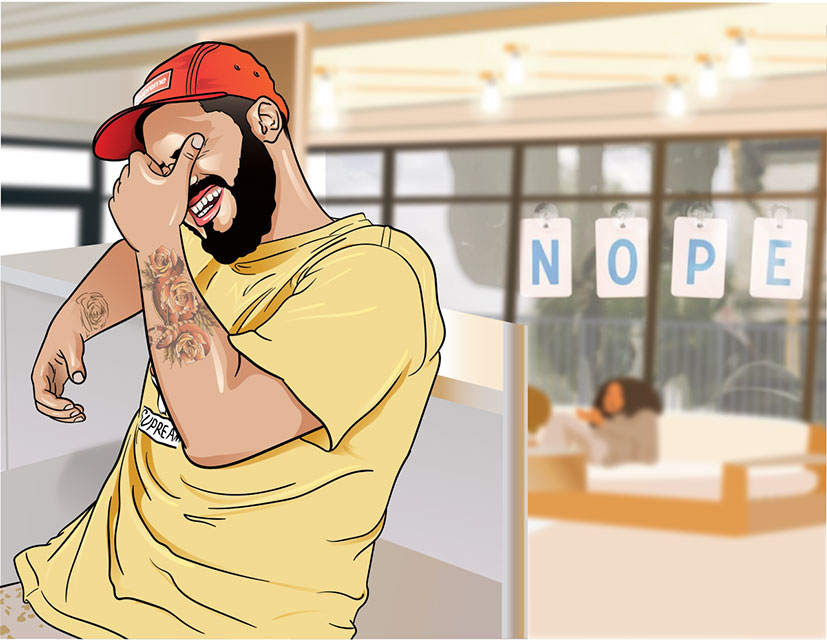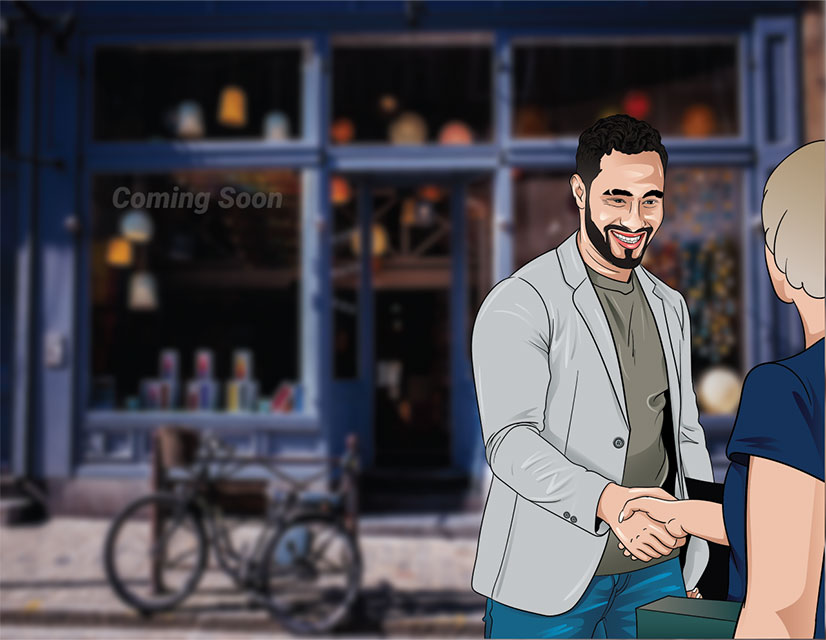Many budget-conscious customers are just unsure about what they really need for their signage, or how much their budget should be, or whether signage is a crucial part of their brand and store traffic. Illustrations by Joe Arenera.
Let’s face it, some potential budget-focused customers are ones your store doesn’t really need – these customers are just about the price point and don’t value the services you provide. These customers often do nothing but take up all your time and resources.
We’ve all heard promises like, ‘Give me this project, and we’ll give you ten more!’ or ‘I really want to work with you, but the store down the street says they can do it a thousand dollars cheaper!’
Lowering prices to win or retain projects will ultimately lead to decreased profits and compromise on quality, resulting in unhappy customers. The best way to deal with them is to just say, ‘No!’
However, many budget-conscious customers are just unsure about what they need for signage, or how much the budget should be, or how signage contributes to their brand and store traffic.
For these customers, you don’t need to cut a penny from your profit to provide them with what they truly need. Start by fully understanding the goals of the customer and make it clear that your store will never negotiate only on signage prices throughout the project.
Here are six strategies that have proven effective for my previous signage store:
- Start with listening. The more you listen to the goals budget-conscious customers want to achieve, and the more you discuss solutions to achieve those goals, the less the budget becomes the focus of the conversation.
Customers need you to assure them that you understand their concerns and that you will prioritize their success throughout the entire project.
- Educate your customers. Many potential customers are not aware of the detailed processes involved in signage research, design, manufacturing, licensing, and installation.
Introducing these processes and their associated costs to your customers will help them understand the complexity of the project, the quality of your work, and any guarantees you provide during the purchase.
Your customers need to know that a ‘cheap’ sign with endless service calls will end up breaking down within a year and cost them much more in the long run.
- Explain its value. When customers understand the impact signage has on their business and brand, they will be more enthusiastic about their signage. A larger sign or a strategically placed second sign can have a significant impact on the increased foot traffic and sales for the customer.
Just Google ‘sign letter size and readability’ and then point out to your customers a plethora of visibility studies showing the effectiveness of sign size and color.
Lowering prices to win or retain budget-conscious customers will ultimately lead to decreased profits. The best way to deal with them is to just say, ‘No!’ Illustrations by Joe Arenera.
- Take a drive. Sometimes seeing is believing. In my previous store, we often took rides with customers to let them view the store from various angles and point out potential issues and benefits of placing signage.
A well-placed, readable sign will help your customers stand out from competitors and increase customer loyalty.
Additionally, visiting your customers on-site, demonstrating the importance of signage placement, and pointing out potential issues will showcase your expertise!
- Get creative. Offer bundled signage packages to help your customers extend their budget using window graphics, roadside monument panels, banners, and any other ideas you can think of.
A few years ago, we had a customer with a limited budget for store construction and signage. Her store was located on a busy street, so we suggested placing a slightly smaller sign at the entrance and adding impactful but cost-effective window graphics. The latter ended up attracting more attention than the entrance sign.
Noticing the success of her first store, she came back for us to design another location — the second time with a much smaller budget limit.
- Provide financing options. Most signage stores require some form of deposit to kickstart a project, with the balance paid upon installation. Have you considered offering three-stage payments within three months to loyal customers?
My store successfully did this in several projects, reducing the initial payment by 60%, installation costs by 10%, and 10% monthly over the next three months. It worked well, fostering lasting relationships. I wouldn’t recommend doing this for every project, but for some special ones, it might work.
There are also many equipment leasing companies that treat customer signage as equipment purchases and offer signage leasing agreements. Leasing allows your customers to fund their projects over time, potentially helping them get the needed cash flow. It’s a huge win-win.





